Many gardeners prefer to use a spading fork because it is helpful for gardening tasks. And after much research on the internet, we have finally determined the proper step-by-step process of using a spading fork.
To use a spading fork correctly, do the following:
- Get the spading fork and hold it.
- Add weight to the fork.
- Use the shaft of the handle as a lever.
- Don't stoop.
- Accumulate dirt to one side.
We encourage you to keep reading to know more about spading forks. We will also help you understand how to correctly choose and purchase quality spading forks that will surely be effective, efficient, and last long. Let's delve into the details!
![a farmer relaxing his feet in a Digging fork, How To Use A Spading Fork [Step By Step Guide]](https://gardentabs.com/wp-content/uploads/2022/11/4-Storage-Ideas-For-Your-RV-Weight-Distribution-Hitch.png)
How To Use Spading Fork
You may not know it, but if other people ask you if you have a digging fork, they refer to a spading fork. Digging fork is another popular term that most gardeners and homeowners use.
If you don't have any idea how to use a spading fork properly, you can follow the guidelines below:
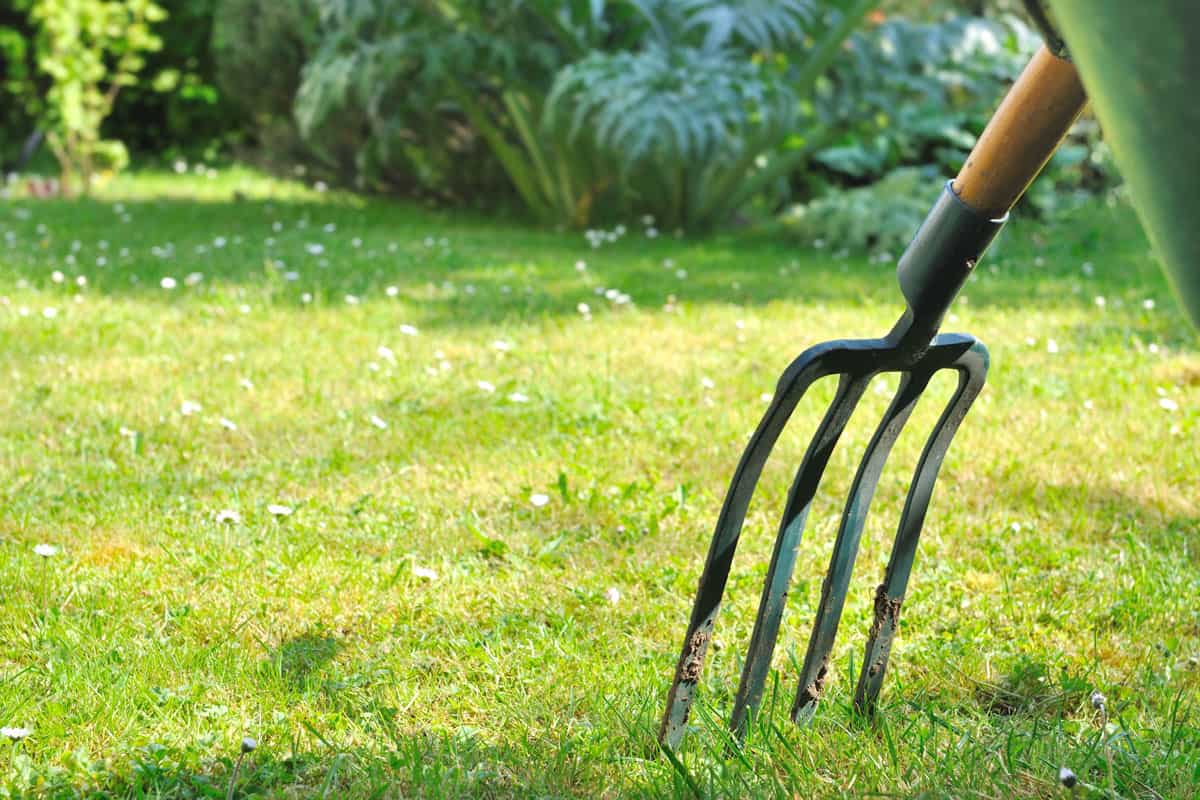
1. Get The Spading Fork And Hold It
A good starting position is with your feet slightly wider than shoulder-width apart and directly behind the fork's tines. When digging, it's best to dig straight down. So, hold the handle firmly in both hands, lift the tines straight above the ground and let gravity do the work.
2. Add Weight To The Fork
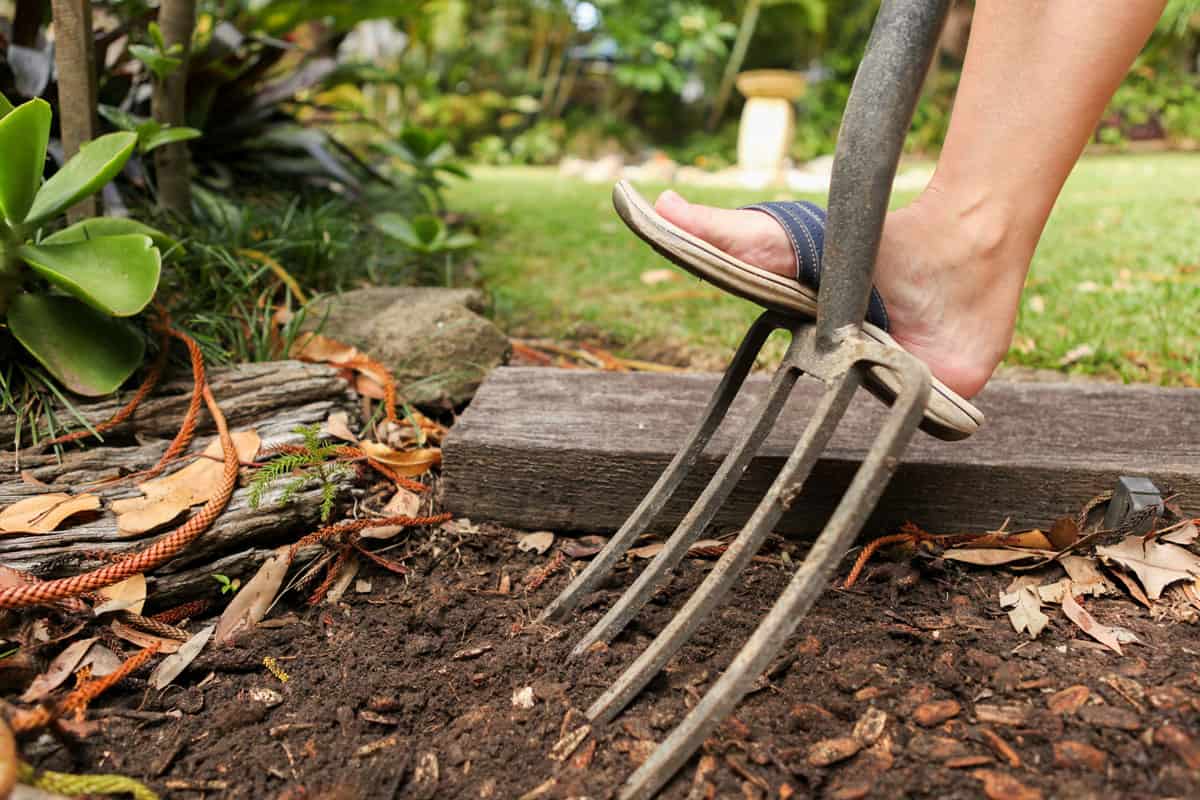
You can gain traction with the help of a fork's treaded blade or rolled shoulder. With your foot, firmly press down on the tines, keeping the pit wall level and straight.
You can also utilize your spading fork to loosen up stony ground. Moreover, you can pry away a rock or chunk of soil by digging under it.
3. Use The Shaft Of The Handle As A Lever
With your knees bent, hold the spading fork on its handle grip with one hand, and the other on the middle of the shaft. Stick the tines into the ground, and use both hands to lever the shaft up, balancing the fork's weight.
4. Don't Stoop
Slowly straighten your knees as you lift. If possible, avoid bending over at the waist.
5. Accumulate Dirt To One Side
The strain on your back is too much when you hold a handful of dirt in a fork. So, keep the loaded fork close to your body while you dig the dirt out of the way.
Click here to check out this 4-tines spading fork on Amazon.
How To Dig Up Plants Using A Spading Or Digging Fork
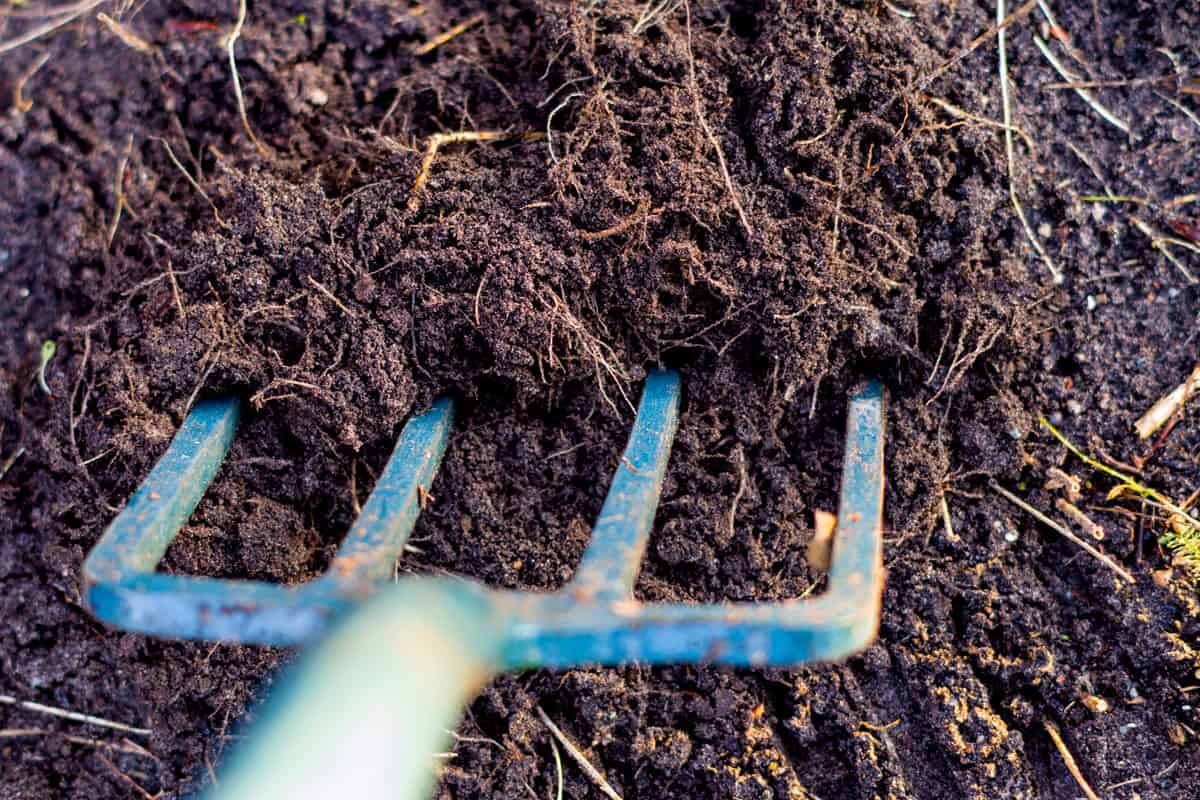
When gardening in raised beds, the spading fork is the primary tool you should prepare. However, you also need a digging fork to incorporate compost into the soil for revitalization.
It is ideal to use a spading fork to dig plants with huge and solid roots instead of a spade since it can reduce the damage inflicted on the roots as you dig. In addition, you can remove more roots in one digging.
You can use a digging fork and a shovel to dig out plants. The fork can help you to loosen the soil around the plants and roots, and the spade can remove the soil. Alternatively, you can perform both tasks with a digging fork. So, choose whatever seems most convenient to you.
The spading fork is most useful when you are dividing or moving plants. If the plant you are working on has massive roots, you can ask someone to get another spading fork and dig in on the other side to make it easier to pull out the plant.
You can also use a spading fork to remove weeds from the root to prevent them from returning.
How To Differentiate Between A Garden Fork And Spading Fork
If you cannot distinguish a digging fork from a garden fork, check the details below to determine how to identify them.
Garden Fork
The garden fork, the most prominent member of the fork family, is ideal for tackling vast plots of land. These durable implements are perfect for labor-intensive tasks like breaking up hard soil or preparing new soil for a garden.
Additionally, you can utilize garden forks for double digging and soil aeration, especially for compact soil or soil containing a lot of clay.
It would be best to go for a digging fork with a wooden shaft or handle.
2. Tines Or Blades
It is ideal to choose a spading fork whose tines are made of stainless steel, as they won't get rusty or weaken quickly.
Although there are so many pretty spading forks in the market, take care not to buy them simply because they look good - they may fail to last for long.
Depending on your garden task, you can select from the following criteria:
Four Tines
You can use this for digging.
More Tines With Smaller Gaps
You can use this when lifting or discarding smaller, crumblier things like shredded bark and old leaves.
Wider Gaps, Fewer Tines
Perfectly suited for handling and tossing dry, coarse materials. It includes hay and straw.
3. Check For Comfortability
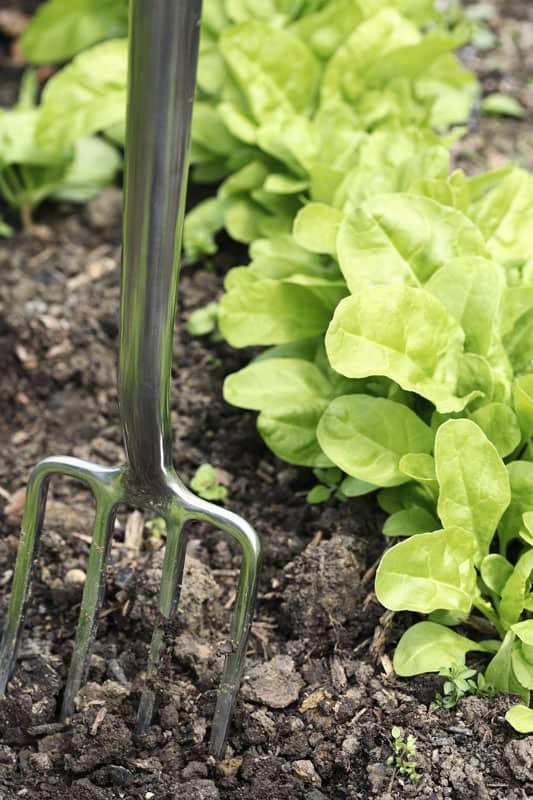
If you are a tall gardener, selecting a longer shaft is best. On the other hand, opt for a shorter shaft if you are shorter.
4. Shaft Material
The shaft material will have a significant impact on the effectiveness and efficiency of your digging fork. So, ensure that you choose a suitable material.
The materials used are:
- fiberglass
- steel
- hardwood
Hardwood is light and can handle heavy loads. In contrast, a shaft made of steel can handle heavy-duty gardening projects. You can only use fiberglass for light work since it can easily break if used for heavy loads or under too much pressure.
5. Handle
Gardeners tend to have a heightened awareness of the importance of reducing their environmental footprint. Make sure the wood in your spading fork handle is from a sustainable source by looking for the FSC logo.
Wrapping It All Up
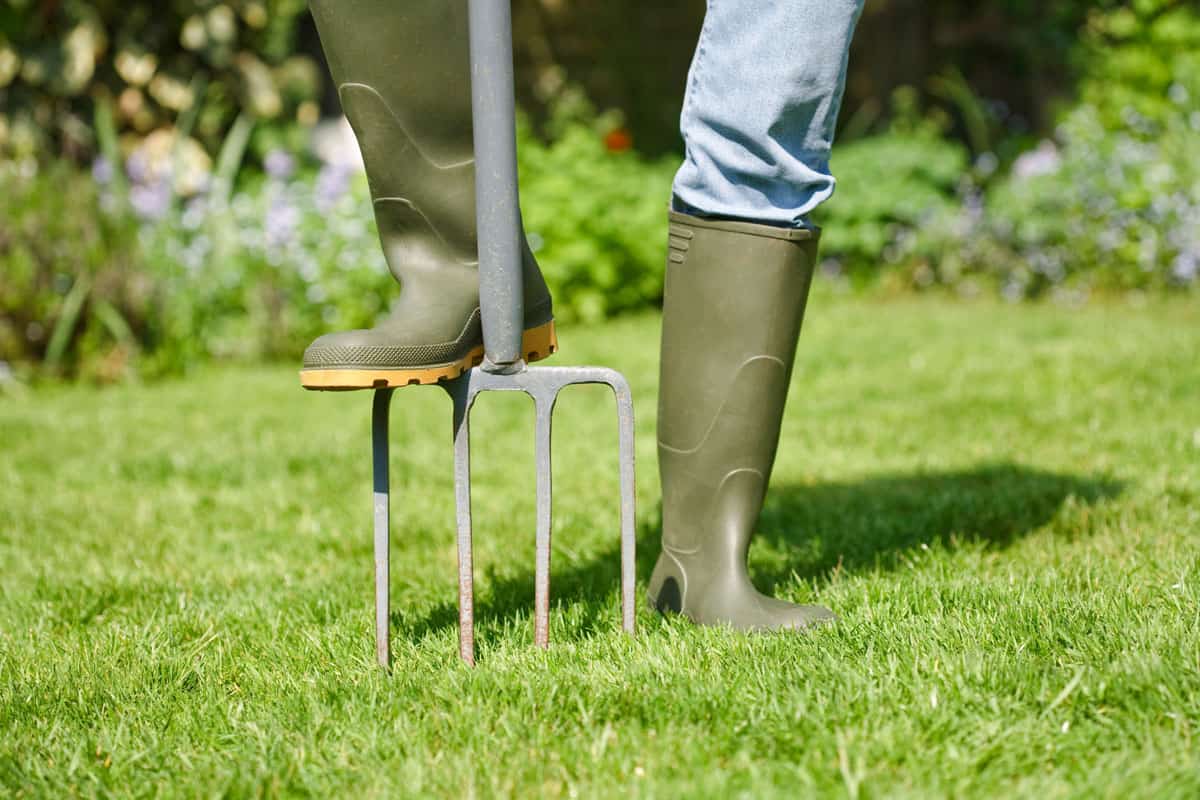
Following the guidelines in this post give you the best chance to succeed in your gardening task using a spading fork. You should also consider the features we've discussed when shopping for a spading or digging fork, especially if you want a long-lasting and efficient one.
We hope you found this post helpful. If you wish to continue reading, you can check these posts out!



